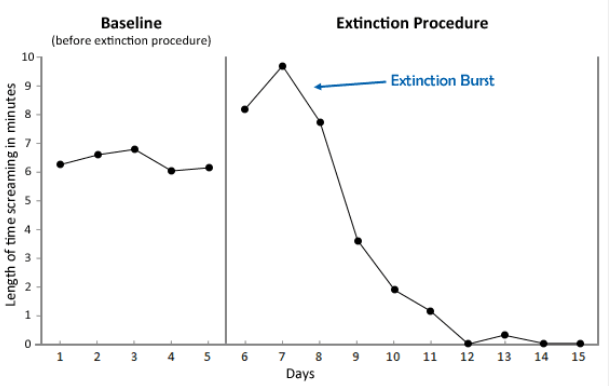
Extinction is the discontinuing of reinforcement for a previously reinforced behavior. Example: The teacher no longer gives attention (which was reinforcing) to a student that talks out during instruction.
Extinction Burst
An extinction burst is an increase in the frequency of the problem behavior when extinction is initially implemented. Specifically, the problem behavior gets worse before it gets better. Example: During extinction, the student talks out even more (initially), then, the amount of talk outs decrease.
What should the team do during extinction or an extinction burst?
The team should continue implementing the plan as designed. These areas should be discussed during initial behavior meetings as a team. If the team has a specific question about the problem behavior, please feel free to reach out to the JBAT team anytime.
- Stick with the plan
- Reward the response you desire.
- IGNORE the behavior you want to reduce.
When you ignore a behavior that a student has done for a number of years, it shouldn’t be surprising that the behavior will spike. For example, consider a 6th grader who has whined his whole life (12 years) anytime he wants something. When you ignore the whining behavior suddenly, the student will be confused because he has previously always gotten what he wants from whining. As a result, the student will up the ante because he believes that if he whines more, he will eventually get what he wants. When he learns eventually that there is no pay off for whining anymore, the behavior will decrease. But right at the beginning, an excellent sign that the plan is working is an increase of behavior. You just need to stay consistent and “weather the storm” before it gets better.
